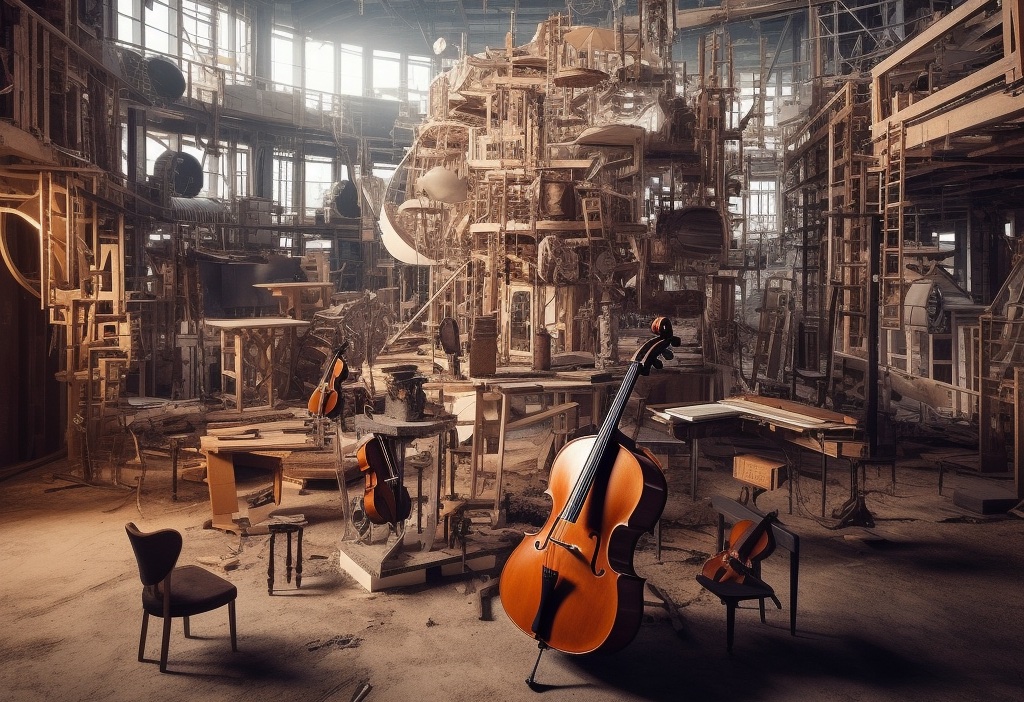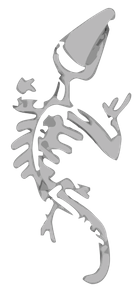
Want to see how a phrase library is built from scratch? Follow me. I will show step by step the evolution of a library that can be used as a construction kit for orchestral and hybrid soundtrack music.
The goal is to collect building blocks for a minimalist (not necessarily orchestral) modern scoring style, including textures, build-ups, rhythms and melodies.
Note: This is an experiment exploring how the new blog format can be used for ongoing and shared projects. Comments will remain closed until a first version of the library is ready. This ensures we get an uninterrupted chain of steps (my own comments) to outline the procedure. After that, the discussion will be open.

Comments
Do., 08.06.2023 - 09:28 Permalink
What's In a Construction Kit
The easiest way not to be overwhelmed and paralyzed by the creative freedom that Synfire offers is to have a library at hand with building blocks you can conveniently drop into your arrangement. Even merely a dozen phrases can already be combined and transformed in countless ways. So what exactly do we want to include with a construction kit?
Melodies
Slow melodies and arpeggio-like melodic runs can be easily drawn with the Line tool and Freehand tool. If you choose the right grid, symbols fall nicely into the desired rhythm. Transposing and transforming Figure segments is child's play. Thus, collecting thousands of potential melodies in a library doesn't make much sense when you can intuitively sketch or record them as you need them. Yes, it takes some practice, especially how to arrange multiple voices, but that's a knowledge you should acquire anyway, if you're serious about making music.
I don't mean there shouldn't be melodies in a construction kit. Just not those you can easily draw by hand.
In general it's wise not to clutter a library with things you can also conveniently draw by hand.
Rhythmic Phrases
Coming up with rhythmic patterns and driving fast-paced instrumental textures can be a real challenge (piano, guitar, bass, staccato strings, brass, woodwinds, etc). Stitching those by hand requires a lot of experience. You need to know exactly how a particular rhythm looks like on screen. Even then, it takes considerable time to build them. We'd rather have an assortment of those in a construction kit, ready to use, whether they are imported from MIDI files, or generated by Factories.
Keep in mind that polyphonic phrases can always be broken apart to be played by multiple instruments. This is my favorite way to build consistent textures.
Drums & Percussion
Unless you are really good at recording your own (and have the equipment), these are also nice to have in a library.
Textures
A texture is when multiple instruments or voices are playing together such that a unique overall rhythm, sound, mood, or listener experience emerges from that. In order to collect these in a library, their individual phrases need to be kept together. The best way to do this is to put them in a folder (this is also what you get when you drop a container into a library, by the way). And yes, we definitely want those in a construction kit.
Harmony
If there are chord progressions or key changes that are typical for the style of a construction kit, they should be included. Universally re-usable progressions however should be kept in a separate library that is dedicated to harmony exclusively.
Other Parameters
Parameter templates already serve as a repository for parameters you want to re-use often. I'd rather use those instead of a library. But it makes sense to include some of them with a construction kit, so other users get a chance to add them to their own templates.
All parameters that alter or define rhythm are nice to have as a template or in a library: Rhythm, Step, Flow, Shift, Velocity. These can be used to alter the dynamics of phrases.
Controller data can be useful for electronic music kits.
Sounds
Synfire Pro allows libraries to include their own rack of sounds. Construction kits built for a wider audience however, should not rely on specific sound libraries unless that is their primary purpose. If a construction kit includes sounds, it can also be opened by Synfire Express and Synfire Sparks, but instruments will use global rack sounds instead (of which you can add as many as you like).
Mi., 14.06.2023 - 13:31 Permalink
Following the workflow explained in this tutorial, I have started collecting phrases from MIDI files.
While doing so, two small libraries emerged that I wanted to share with you. They are intermediate results, but certainly useful for many purposes outside this construction kit project.
Mo., 17.07.2023 - 18:51 Permalink
After a pause for doing other things, I've continued working on this kit. Find attached a first version of the library. It is still small. Nevertheless, I was already able to sketch something using this library.
I must say it is absolute fun to build orchestral music with drag & drop. Drawing melodies by hand is a bit more challenging because you need to figure out a rhythm yourself (the custom grid is your friend). For this example I kept it simple with 4:4 and a rather uniform, anthemic rhythm.
Both library and arrangement were built with VSL Synchron Prime Edition (VEP Server) and the Native Instruments Noire piano. They should work with fallback sounds in your studio, albeit the articulations will not work as intended, of course.
This example took 3 hours to make.
(https://soundcloud.com/cognitone/day-after-tomorrow?si=6f567f0c01e84e40…)
Di., 18.07.2023 - 00:08 Permalink
Thanks, for this compostion example, informative and sounds good though. (seems that the violins are not at their max expession)
Unfortunately don't know yet completly how it was made this composition , so it takes some time to look at it.
Di., 18.07.2023 - 08:54 Permalink
Look into the library and arrangement. It's all drag & drop plus some minor corrections.
Di., 18.07.2023 - 10:12 Permalink
Also concerns me how the structure of the composition is done.
I then see as a base a chord progression starting with a prime tutti instruments.
The harmony alternating between the root container and containers.
That overview screen does serve its purpose now by being able to follow the construction of the composition.
Then bar 1 with a starting chord which is repeated in the root container from bar 17 to 21 and from bar 37 to bar 45.
As a composition starts from bar 1 to 5 a chord progression with the tutti instrument.
Di., 18.07.2023 - 11:02 Permalink
I also want to take a look at question-and-answer chords
You can make these with a piano.
To make a library of these
Di., 05.09.2023 - 19:08 Permalink
Here's a new version of the library.
Strings: "Arps, Two Voices" and "Combis" have been entirely drawn and edited by hand. It's easier than expected. These are mostly arpeggios with a counter voice. Creating a number of variations is also easy because the phrases are short.
After a phrase has been dropped, you will want to edit it anyway. There is really no point in filling a library with too many variations. These are much better done inside a project as needed.
Fr., 29.09.2023 - 17:33 Permalink
Meanwhile the library filled up with more orchestral phrases that crossed my path while I was making a much needed tutorial for this workflow. The video tutorial for this piece can be watched here.
(https://soundcloud.com/cognitone/arranging-for-orchestra-tutorial-score…)